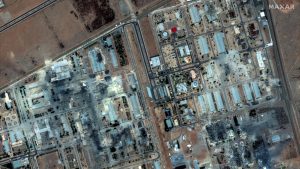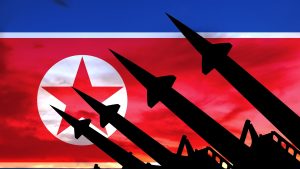Military officials staying course even as America’s role in NATO faces uncertainty
Ella Greene March 19, 2025 0
- America’s role within NATO has remained important for decades, but could that be changing? Whether it is or not, those in charge of NATO readiness are staying focused on their task.
- In early March, a panel of experts gathered in Colorado to discuss NATO, Russia’s invasion of Ukraine and the state of the organization.
- One major issue for NATO and for military readiness is the sluggishness of American military producers, according to one expert.
Full Story
For decades, America’s role in NATO was unquestioned, as certain as death and taxes. There was no doubt that aggression in Europe would be met by the United States and its European allies.
Now, for the first time since its inception in 1949, that commitment is coming into question. While no one yet knows exactly what the future holds, those responsible for ensuring that NATO is ready to meet any threat, regardless of current political rhetoric, are staying focused on their task.
During the first full week of March, a panel of experts gathered in an oversized ballroom in Aurora, Colorado, nearly 6,000 miles away from the fighting in Ukraine, to discuss Russia’s invasion of the country, as well as the current state of the North Atlantic Treaty Organization.
Tom Goffus, assistant secretary general for NATO operations, explained the role of the operations division.
“At NATO, the role of the ops division is threefold in six words: prevent war, support Ukraine, and defend allies,” Goffus said. “NATO has troops in Kosovo and Iraq, and NATO activities are dynamically managed by SACEUR on a daily basis to prevent Russia and all our adversaries from perceiving an advantage in any geographic domain, warfighting domain or in readiness.”
What has NATO been up to?
Thirty-two countries, including the United States, have sworn to protect each other and defend against attacks from states like Russia. Goffus detailed that even though Ukraine is not a NATO nation, the response to Russia’s invasion did not go unchecked.
“The ops division underpins the pillars of NATO’s work for Ukraine, including NATO support and training assistance to Ukraine in Wiesbaden, Germany, and the $40 billion pledge for military assistance to Ukraine that all allies made last year in D.C., which in 2024 hit $51 billion,” Goffus said. “That’s $11 billion more than was pledged. By the way, almost 60% of that was from non-U.S. allies.”
Brig. Gen. Andrew Clark, commanding general for NATO Intelligence, Surveillance and Reconnaissance, told attendees that no matter what is happening stateside, the job remains for troops stationed in Europe.
“The advantage is we provide that unfiltered intelligence to all those nations,” Clark stated. “In the U.S., we have the DGS system, the distributed common ground system, that processes the information that aircraft in the air collect, but we do it all in-house. We’re a one-stop shop. We have about 150 analysts on the ground there, and we put out roughly 10,000 products a year.”
For European counterparts like Italian Air Force Lt. Gen. Luigi Del Bene, deputy commander and chief of staff for operational forces of the 1st Air Region Command, the success of this decades-old pact depends on ensuring 32 nations move as one.
“One of the biggest challenges is keeping the nations involved in this process and making sure we’re synchronized to the different changes that SACEUR and SHAPE are running every day together with the components,” he emphasized. “The good part is that I’ve seen more focused leadership on readiness over the last couple of years, which is a good fact that people are taking this specific function more seriously.”
What about Ukraine?
The conversation at the meeting invariably returned to Ukraine, Russia’s illegal invasion and what has been learned in the years since. Clark emphasized the importance of collective action based on shared awareness.
“Lesson number one, collective action rests on the foundation of shared awareness, and it takes real work to achieve that shared awareness,” Clark said, speaking about the Russian invasion. “Our 2022 response couldn’t have been more different than the 2014 response, primarily due to shared intelligence among allies, especially from the U.S. Lesson number two is, it’s not what we do that provokes Putin; it’s what we don’t do. We should have learned that in 2014. Lesson number three is, Putin is not a strategist; he’s an opportunist. He pushes on some doors, and when nobody pushes back, he walks in. What 2014 taught him was there was no significant consequence for using force.”
How fast can readiness actually be achieved?
Regarding President Trump’s demand that NATO nations spend more on national defense, Goffus highlighted the problem of American defense contractors’ inability to meet their customers’ needs.
“I talked to a Lithuanian who wants to buy AMRAAMs for their NASAMS with their extra percentage of GDP in defense spending. Five-year wait,” Goffus said. “I talked to the Bulgarian chief who wants to buy Javelins for their Strikers. Seven-year wait. I talked to some of the big allies who want to buy Patriots. Ten-year wait. That needs to get fixed. The industry says they need long-term demand. Well, 10 years sounds like long-term demand to me. There is something we need to fix.”
Given the current political climate, the panelists acknowledged there are no quick fixes to the issues facing NATO partner nations. They emphasized that an unchecked Russia will make waves far beyond Europe, as letting Putin off the hook will embolden China and create a new set of problems in the Pacific.
Access the full Weapons and Warfare episode here.
Access all Weapons and Warfare podcast episodes here.
Related Stories
Ella Rae Greene, Editor In Chief
Ella Greene
Ella and the staff at Clear Media Project (CMP) curate these articles.
Unless otherwise noted CMP does not write these articles.
The views, thoughts, and opinions expressed in the articles published on this blog belong solely to the original authors and do not necessarily reflect the views of the blog owner. The blog owner does not claim ownership of the content shared by contributors and is not responsible for any inaccuracies, errors, or omissions.
All rights and credits goes to its rightful owners. No Copyright Infringement is intended. If you believe any content infringes on your rights, please contact us for review and potential removal.





